"Abyssinian Genet." The Animal Files: Mammals > Carnivores. Retrieved May 1, 2014.
- Available at: http://www.theanimalfiles.com/mammals/carnivores/genet_abyssinian.html
"Abyssinian Genet Pictures and Facts." The Website of Everything: Animals > Mammals > Carnivora > Viverridae > Viverrinae > Genetta. Retrieved May 1, 2014.
- Available at: http://thewebsiteofeverything.com/animals/mammals/Carnivora/Viverridae/Genetta/Genetta-abyssinica.html
Balakrishnan, Mundanthra; and Afework, Bekele. October 2008. “A Road Kill of the Ethiopian Genet Genetta abyssinica along the Addis Ababa-Dira Dewa Highway, Ethiopia.” Small Carnivore Conservation 39:37-38. Retrieved May 1, 2014.
- Available at: http://www.smallcarnivoreconservation.org/sccwiki/images/2/2a/SCC39_Balakrishnan_and_Afework.pdf
Bisby, F.A.; Roskov, Y.R.; Orrell, T.M.; Nicolson, D.; Paglinawan, L.E.; Bailly, N.; Kirk, P.M.; Bourgoin, T.; Baillargeon, G.; and Ouvrard, D. (red.). 2011. "Genetta abyssinica." Species 2000 & ITIS Catalogue of Life: 2011 Annual Checklist. Reading, UK. Retrieved May 1, 2014.
Boelens, Bo; Watkins, Michael; and Grayson, Michael. 2009. The Eponym Dictionary of Mammals. JHU Press.
Boudet, Ch. 10 January 2009. "Species Sheet: Abyssinian Genet." Mammals' Planet: Vs n°4, 04/2010. Retrieved May 1, 2014.
- Available at: http://www.planet-mammiferes.org/drupal/en/node/38?indice=Genetta+abyssinica
Corson, Docteur P.-J. October 2005. Les grands prédateurs d’Afrique: biologie, éthnologie et chasse. Brussels, Belgium: Éditions du Gerfaut.
Crawford-Cabral, J. 1981. “A New Classification of the Genets.” African Small Mammal Newsletter6:8-10.
Crawford-Cabral, João. 1980. "The Classification of the Genets (Carnivora, Viverridae, genus Genetta)." Boletim da Sociedade Portuguesa de Ciências Naturais 20:97-114.
Díaz Behrens, G.; and Van Rompaey, H. 2002. “The Ethiopian Genet, Genetta abyssinica (Rüppell 1836) (Carnivore, Viverridae): Ecology and Phenotypic Aspects." Small Carnivore Conservation 27:23-28.
Driver, Stephanie (ed.). 2008. Exploring Mammals. Tarrytown, NY: Marshall Cavendish Corporation.
Duff, Andrew; and Lawson, Ann. 2004. Mammals of the World: A Checklist. Yale University Press.
Ewer, R.F. 1998. The Carnivores. Cornell University Press: Cornell Paperbacks.
Gaubert, Philippe; Balakrishnan, Mundanthra; and Bekele, Afework. April 2009. Corrigendum “A Road Kill of the Ethiopian Genet Genetta abyssinica along the Addis Ababa-Dira Dewa Highway, Ethiopia” by Mundanthra Balakrishnan and Afework Bekele (2008, Small Carnivore Conservation 39:37-38).” Small Carnivore Conservation 40:40. Retrieved May 1, 2014.
- Available at: http://www.smallcarnivoreconservation.org/sccwiki/images/a/af/SCC40_Gaubert_et_al_SCC.pdf
Gaubert, Philippe; and Dufour, Sylvain. July 2013. “First Report of a Chinchilla Phenotype in Viverridae (Carnivora).” Small Carnivore Conservation 48:92-95. Retrieved May 1, 2014.
- Available at: http://www.smallcarnivoreconservation.org/home/wp-content/uploads/2013/08/SCC-48-11-Gaubert-Dufour.pdf
Gaubert, P.; Chalubert, A.; and Dubus, G. 2008. “An Interactive Identification Key for Genets and Oyans (Carnivora, Viverridae, Genettinae, Genetta spp. and Poiana spp.) Using Xper2.” Zootaxa 1717:39-50.
Gaubert, P.; and Hoffmann, M. 2008. "Genetta abyssinica." In: IUCN 2013. International Union for Conservation of Nature and Natural Resources Red List of Threatened Species. Version 2013.2. Retrieved May 1, 2014.
- Available at: http://www.iucnredlist.org/details/8994/0
Gaubert, P.; Fernandes, C. A.; Bruford, M. W.; and Veron, G. 2004. "Genets (Carnivora, Viverridae) in Africa: An Evolutionary Synthesis Based on Cytochrome b Sequences and Morphological Characters." Biological Journal of the Linnean Society 81:589-610.
Gaubert, P.; Papeş, M.; Peterson, A.T. June 2006. "Natural History Collections and the Conservation of Poorly Known Taxa: Ecological Niche Modeling in Central African Rainforest Genets (Genetta spp.)." Biological Conservation 130(1):106–117.
Gaubert, P.; Taylor, P.J.; and Veron, G. 2005. “Integrative Taxonomy and Phylogenetic Systematics of the Genets (Carnivora, Viverridae, Genetta): A New Classification of the Most Speciose Carnivoran Genus in Africa.” Pp. 371-384 in African Biodiversity: Molecules, Organisms, Ecosystems edited by Bernard A. Huber, Braldey J. Sinclair, and Karl-Heinz Lampe. NY: Springer Science + Business Media, Inc.
Gaubert, Philippe; Weltz, Marjorie; and Chalubert, Antoine. 14 January 2008. “Genetta abyssinica." Genets and Oyans. Paris: Université Pierre et Marie Curie. Retrieved May 1, 2014.
- Available at: http://lis-upmc.snv.jussieu.fr/genettes/web/fiches_en/taxa/genetta_abyssinica.html
"Genet." AWF: What We Do>Wildlife Conservation>Genet. African Wildlife Foundation. Retrieved May 1, 2014.
- Available at: http://www.awf.org/wildlife-conservation/genet
“Genetta abissina.” La Casa delle Farfalle di Bordano: Animals. Bordano, Udine, Italy. Retrieved May 1, 2014.
- Available at: http://www.farfalledibordano.it/en/animal/abyssinian-genet
"Genetta abyssinica." The Marine Biological Laboratory Universal Biological Indexer and Organizer NamebankID 2478467. Retrieved May 1, 2014.
- Available at: http://www.ubio.org/browser/details.php?namebankID=2478467
"Genetta abyssinica: Abyssinian Genet." Encyclopedia of Life. Retrieved May 1, 2014.
- Available at: http://eol.org/pages/328093/details
"Genetta abyssinica (Ethiopian Genet)." ZipcodeZoo: Species Identifier 5388. Retrieved May 1, 2014.
- Available at: http://zipcodezoo.com/animals/g/genetta_abyssinica/
Gervais, Paul. 1855. Histoire naturelle des Mammifères: Carnivores, Proboscidiens, Jumentés, Bisulques, Édentés, Marsupiaux, Monotrèmes, Phoques, Sirénides et Cétacés. Paris: L. Curmer.
Gittleman, John L.; Funk, Stephan M.; Macdonald, David; and Wayne, Robert K. (eds.). 2001. Carnivore Conservation. Cambridge University Press: Conservation Biology 5.
Gray, John Edward. 1869. Catalogue of Carnivorous, Pachydermatous, and Edentate Mammalia in the British Museum. London: Trustees of the British Museum (Natural History).
- Available via Internet Archive at: https://archive.org/details/catalogueofcarni00brit
Huber, B.A.; Sinclair, B.J.; and Lampe, K.-H. (eds.). 2005. African Biodiversity: Molecules, Organisms, Ecosystems. NY: Springer.
Hunter, Luke; and Barrett, Priscilla. 2011. A Field Guide to the Carnivores of the World. London, Cape Town, Sydney, Auckland: New Holland Publishers (UK) Ltd.
Jennings, A. P.; and Veron, J. 2009. "Family Viverridae (Civets, Genets, and Oyans)." In: Don E. Wilson and Russel Mittermeier (Hrsg.) Handbook of the Mammals of the World Volume 1: Carnivores. Lynx Edicions.
Jukofsky, Diane for the Rainforest Alliance. 2002. Encyclopedia of Rainforests. Westport, CT: Oryx Press.
Kingdon, Jonathon; Happold, David; Butynski, Thomas; Hoffmann, Michael; Happold, Meredith; and Jan Kalina (eds.). 2013. Mammals of Africa, Volume 5: Carnivores, Pangolins, Equids and Rhinoceroses, edited by Jonathan Kingdon and Michael Hoffmann. Bloomsbury Publishing.
Kondo, H.; Tesar, J.; Cloud, D.; Kagan, L. (eds.). 1972. Civets, Genets, and Linsangs, Vol. 2, 3rd Edition. Milan: Fratelli Fabbri Editori.
Larivière, Serge. 2004. "Civets, Genets, and Linsangs." Pp. 335-339 in Grzimek's Animal Life Encyclopedia, Second Edition. Volume 14: Mammals III, edited by Michael Hutchins, Devra G. Kleiman, Valerius Geist, and Melissa C. McDade. Farmington Hills, MI: Gale Group, Inc., division of Thomson Learning Inc.
Mangin, Chris. 2014. "Ethiopian Montane Grasslands and Woodlands." World Wildlife Fund. Retrieved May 1, 2014.
- Available at: http://worldwildlife.org/ecoregions/at1007
Myers, P.; Espinosa, R.; Parr, C.S.; Jones, T.; Hammond, G.S.; and Dewey, T.A. 2014. “Genetta abyssinica: Abyssinian Genet.” The Animal Diversity Web (On-line). University of Michigan Museum of Zoology. Retrieved May 1, 2014.
- Available at: http://animaldiversity.ummz.umich.edu/accounts/Genetta_abyssinica/classification/
Gervais, Paul. 1855. Histoire naturelle des Mammifères: Carnivores, Proboscidiens, Jumentés, Bisulques, Édentés, Marsupiaux, Monotrèmes, Phoques, Sirénides et Cétacés. Paris: L. Curmer.
Gittleman, John L.; Funk, Stephan M.; Macdonald, David; and Wayne, Robert K. (eds.). 2001. Carnivore Conservation. Cambridge University Press: Conservation Biology 5.
Gray, John Edward. 1869. Catalogue of Carnivorous, Pachydermatous, and Edentate Mammalia in the British Museum. London: Trustees of the British Museum (Natural History).
- Available via Internet Archive at: https://archive.org/details/catalogueofcarni00brit
Huber, B.A.; Sinclair, B.J.; and Lampe, K.-H. (eds.). 2005. African Biodiversity: Molecules, Organisms, Ecosystems. NY: Springer.
Lindley, John. 1820. Rosarum monographia; Or, A Botanical History of Roses. To Which Is Added An Appendix, For The Use Of Cultivators, In Which The Most Remarkable Garden Varieties Are Systematically Arranged. London: Printed for J. Ridgeway.
- Available via Biodiversity Heritage Library at: http://biodiversitylibrary.org/page/10900856
Nowak, Ronald M. 1999. Walker's Mammals of the World, Sixth Edition. Volume I. Baltimore: Johns Hopkins University Press.
Rosevear, Donovan Reginald. 1974. The Carnivores of West Africa. London: Trustees of the British Museum (Natural History).
- Available via Biodiversity Heritage Library at: http://www.biodiversitylibrary.org/item/35416#page/7/mode/1up
Rüppell, Eduard. 1835 - 1840. Neue Wirbelthiere zu der Fauna von Abyssinien gehörig. Frankfurt am Main: S. Schmerber.
- Available via Biodiversity Heritage Library at: http://biodiversitylibrary.org/page/37140075
Veron, Geraldine. 6 September 2010. "Phylogeny of the Viverridae and 'Viverrid-like' feliforms." Pp. 64-91 in Carnivoran Evolution: New Views on Phylogeny, Form and Function, edited by Anjali Goswami and Anthony Friscia. Cambridge University Press.
Virgós, E.; Llorente, M.; and Cortés, Y. 1999. "Geographical Variation in Genet (Genetta genetta L.) Diet: A Literature Review." Mammalian Review 29:119-128.
Wilson, Don E.; and Cole, F. Russell. 2000. Common Names of Mammals of the World. Washington, D.C.: Smithsonian Institution Press.
Wilson, Don E.; and Reeder, DeeAnn M. (editors). 2005. Mammal Species of the World: A Taxonomic and Geographic Reference (3rd ed), Johns Hopkins University Press.
Wrobel, Murray (Editor). 2007. Elsevier's Dictionary of Mammals: Latin English German French Italian. Oxford, U.K.: Elsevier B.V.



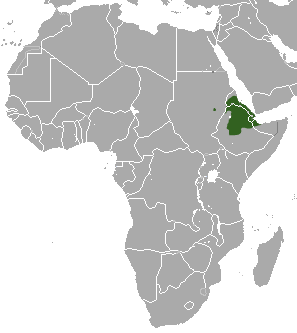
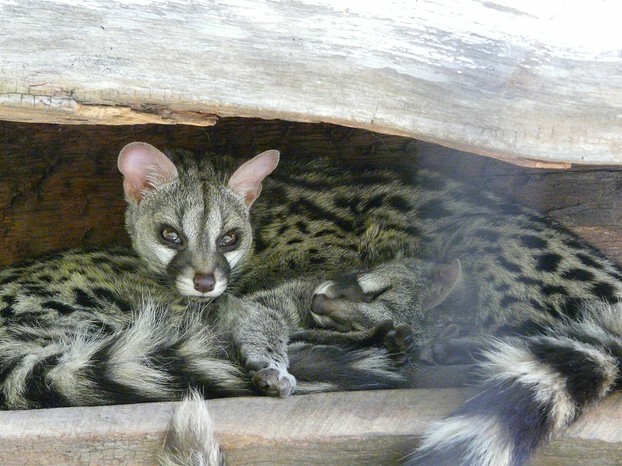
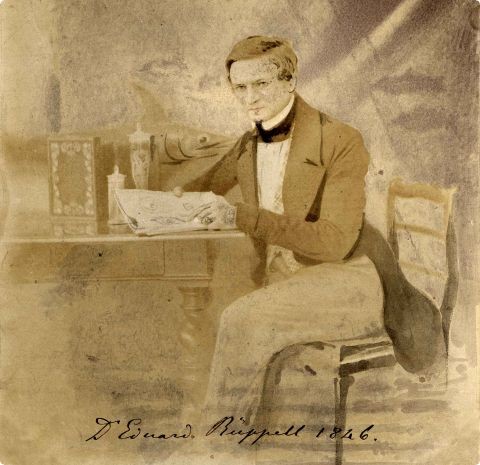
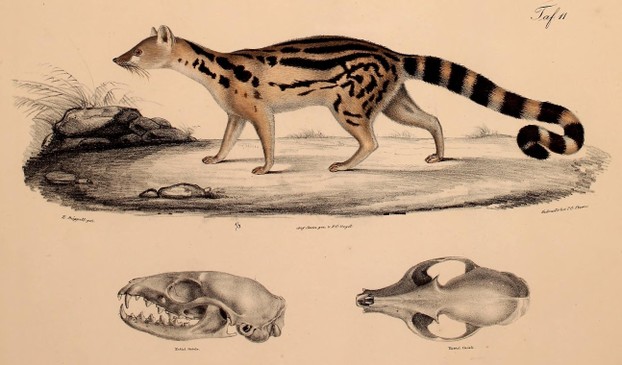
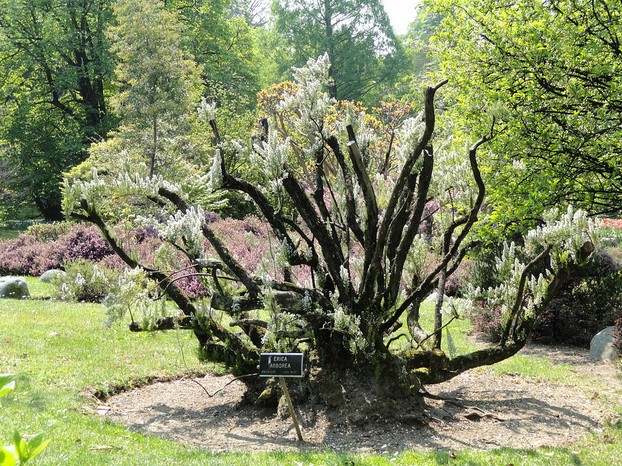
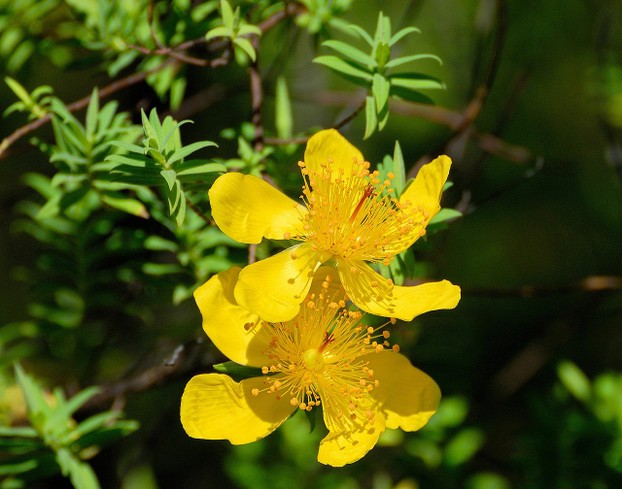
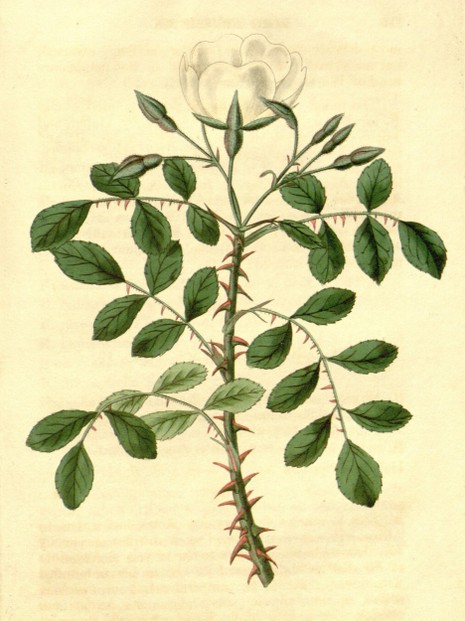
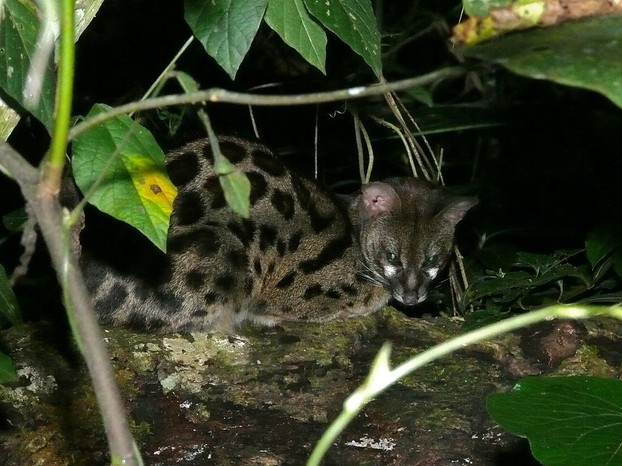
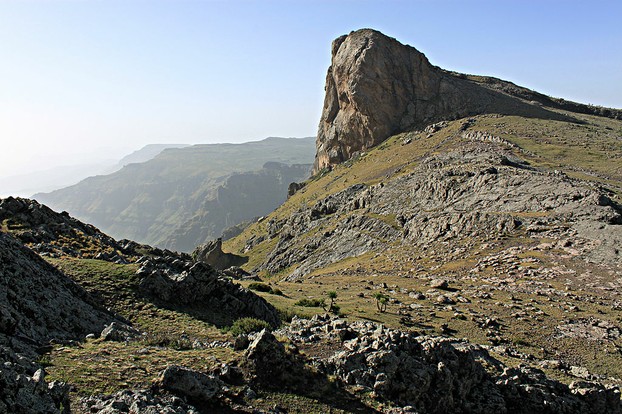




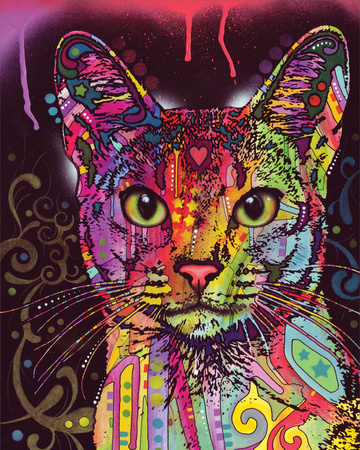
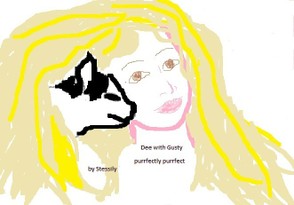
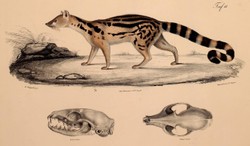

 Are Hawaiian Huakai Po Nightmarchers Avenging Halloween Thursday?on 10/02/2024
Are Hawaiian Huakai Po Nightmarchers Avenging Halloween Thursday?on 10/02/2024
 Mailing Addresses for 2023 Form 4868 Extending 1040 and 1040SR April 15, 2024, Due Dateon 04/15/2024
Mailing Addresses for 2023 Form 4868 Extending 1040 and 1040SR April 15, 2024, Due Dateon 04/15/2024
 Mailing Addresses for 2023 Forms 1040 and 1040SR Filed in 2024on 04/15/2024
Mailing Addresses for 2023 Forms 1040 and 1040SR Filed in 2024on 04/15/2024
 Mailing Addresses for 2022 Form 4868 Extending 1040 and 1040SR April 18, 2023, Due Dateon 04/13/2023
Mailing Addresses for 2022 Form 4868 Extending 1040 and 1040SR April 18, 2023, Due Dateon 04/13/2023

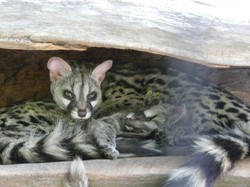
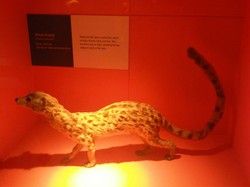
Comments
Mira, Your appreciation of nature is greatly appreciated. Your appreciation is revealed through your perceptive, encouraging comments. Thank you.
I see now. Yes, as I said, I did notice there wasn't much shown/known about them. Now I understand why. Thank you for your answer.
Mira, Genets and ringtails number among my longstanding special interests. Not much is available on them for the general public whereas information may be gleaned from the scientific domain. Genets and ringtails are elusive mammals, and many are found in protected areas where filmmaking is not easily accomplished. I'm just sharing here my longstanding interests, to familiarize readers with lesser known aspects of nature, to remind them of more familiar faunal and floral participants in nature.
I never see genets or similar animals on TV, and am intrigued to find genets and ringtails on your pages. Did you research them all as a group at one point, or are you researching them now, as you write about them?